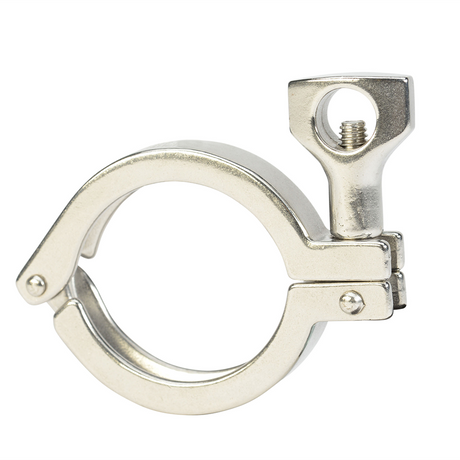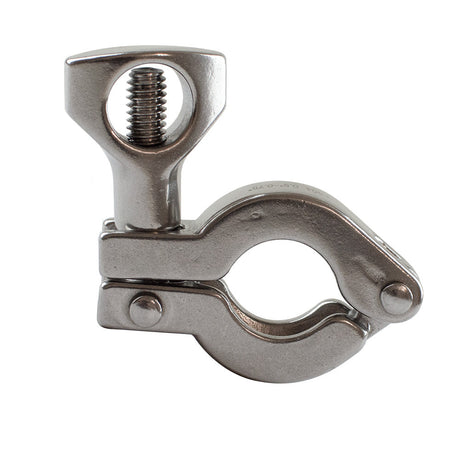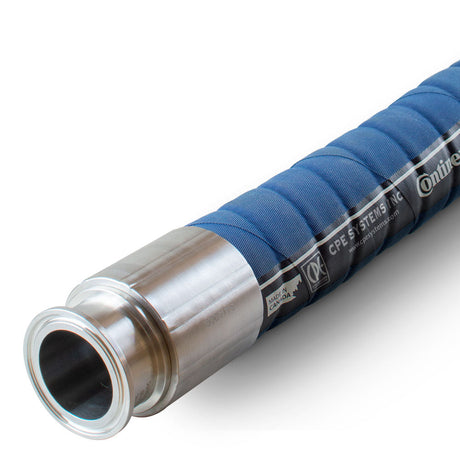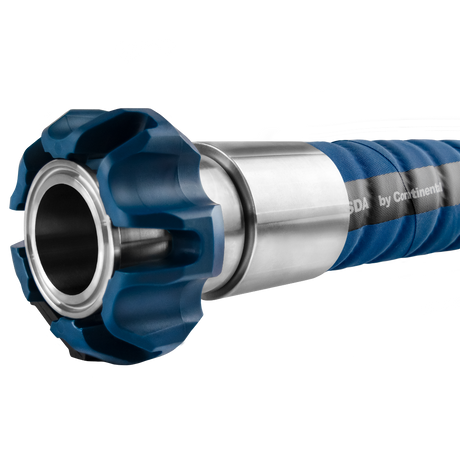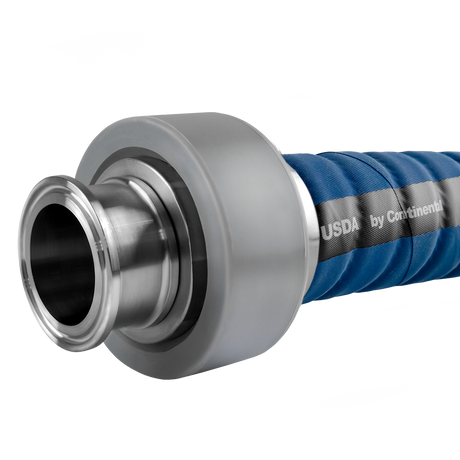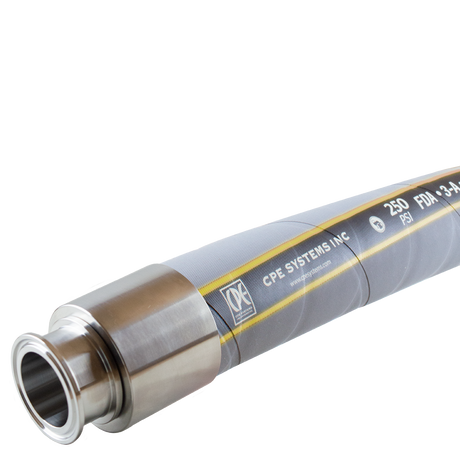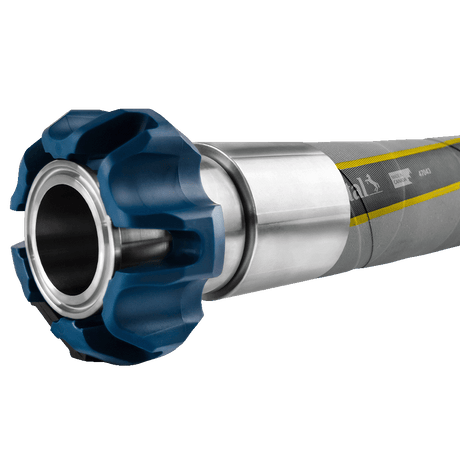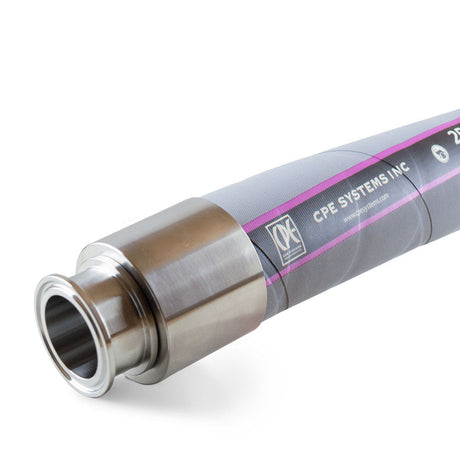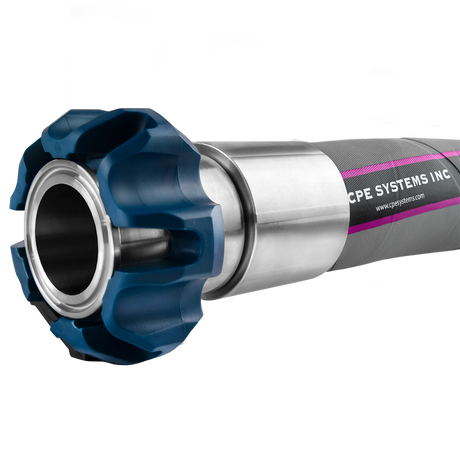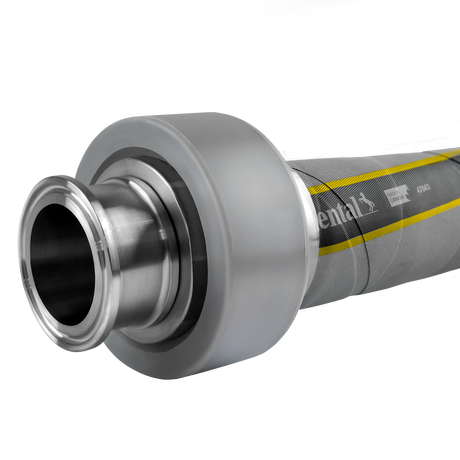We receive many questions about why some different sizes of hose use the same size Tri-Clamp. The industry standard Tri-Clamp design includes a few exceptions to the rule that each fitting uses a specific clamp size. The exceptions:
- ½" and ¾" fittings both use the same size clamp, which is the ¾" Tri-Clamp.
- 1" and 1½" fittings both use the same size clamp, which is the 1½" Tri-Clamp.
WHY DIFFERENT SIZES OF HOSE USE THE SAME SIZE TRI-CLAMP

Tri-Clamp fittings are sized by the outer diameter (OD) of their tube (or "barb"). When adding a Tri-Clamp fitting to a hose, the OD of a Tri-Clamp fitting's tube must be the same as the inner diameter (ID) of the hose it will be used with. Hoses are measured by their ID, so if you have a 1½" hose, you will need a 1½" Tri-Clamp fitting.
However, the OD of the fitting's tube is independent of the size of its end (or "flange"). For example, a 1½" Tri-Clamp fitting will have a 1½" OD tube and a 1.984" end. A corresponding Tri-Clamp for use with this fitting will be labeled 1½", but no part of it will measure 1½"; rather, it will have an inner diameter of 1.984", so that it fits a 1½" fitting.
To make matters more confusing, ½" and ¾" fittings both use the same-sized end (or flange), as do 1" and 1½" fittings. When shopping for a Tri-Clamp that will work with a ½" fitting, you will want a ¾" Tri-Clamp. When shopping for a Tri-Clamp to work with a 1" fitting, you will want a 1½" Tri-Clamp.
These hose pairs sharing the same Tri-Clamp size limit the production of fractional sizes.
USING CONCENTRIC AND ECCENTRIC REDUCERS
When connecting two different hose sizes from one of these shared Tri-Clamp size pairs (½" and ¾" and 1" and 1½"), it’s recommended to use a concentric reducer or an eccentric reducer. This provides a gradual, smooth path for products to flow from one size to another.
Here are some pros and cons of connecting a pair of sized fittings without a reducer:
Pros:
- Only one clamp and gasket size needs to be stocked (both 1½”).
- Using the smaller size for discharge lines can be more budget-friendly.
- The smaller size is easier to handle and takes up less storage space.
Cons:
- If the larger size of the pair is used on suction lines without a reducer, it can create pooling and shearing areas at the connection.
- There is a less-than-perfect hygienic connection. This could be a potential bacteria trap for some products, but it is perfectly fine for CIP (clean-in-place) applications.
CONCLUSION
In short, Tri-Clamp fittings are sized based on the OD of their tube, which needs to match the ID of the hose they work with. Tri-Clamps are sized based on the fitting size they are compatible with. Since ½” and ¾" fittings have the same-sized ends, they also use the same-sized clamp. The same goes for 1” and 1 ½" fittings. So, if you’re purchasing a Tri-Clamp for use with a 1” fitting, you will want to buy a 1 ½" Tri-Clamp.


